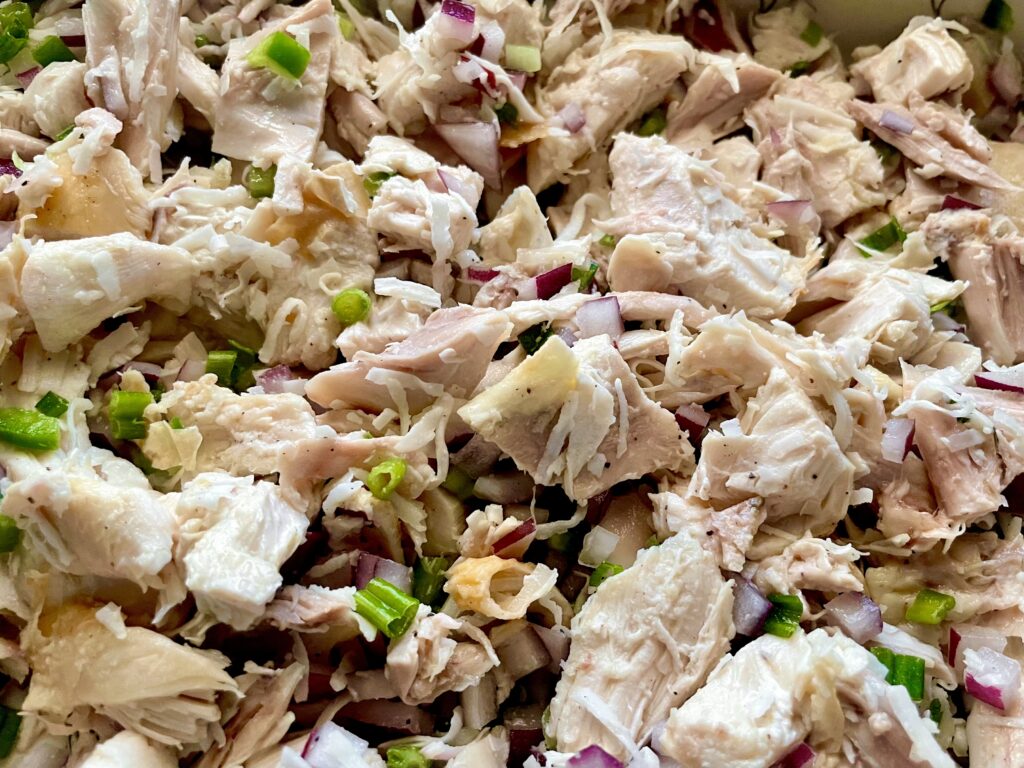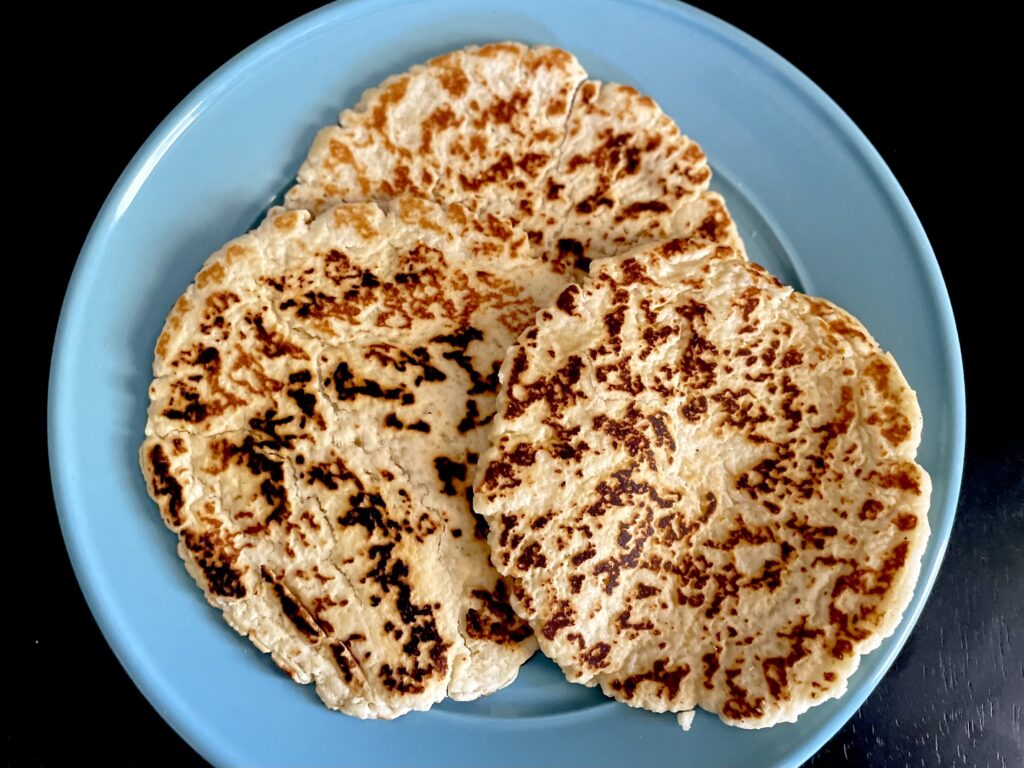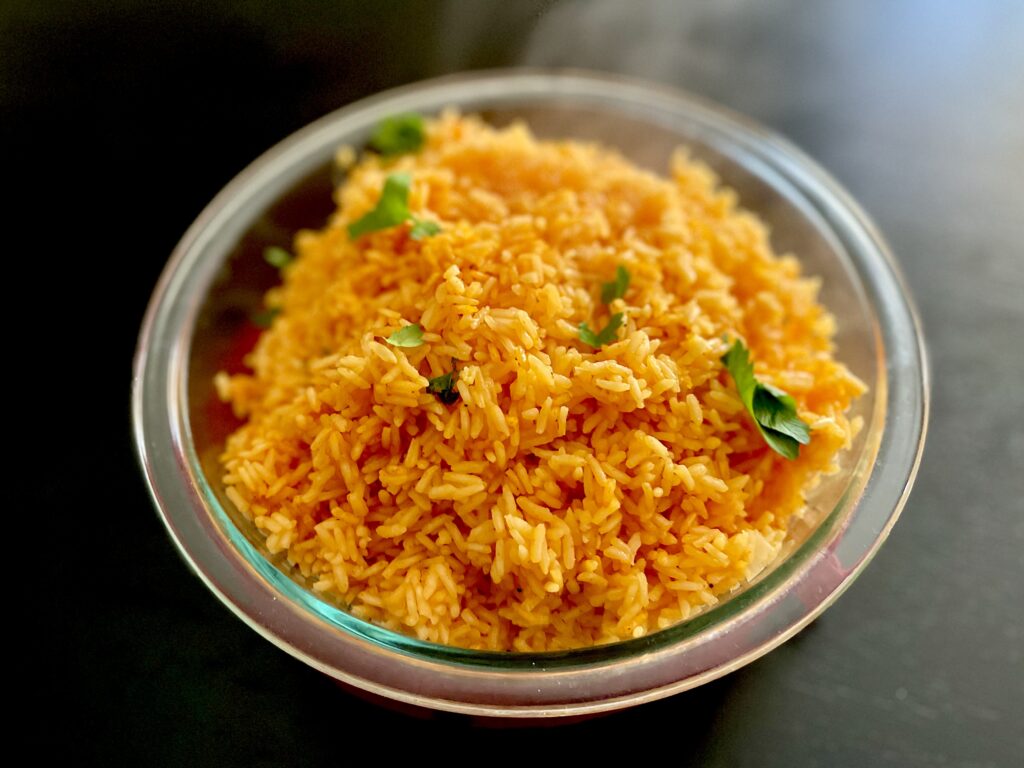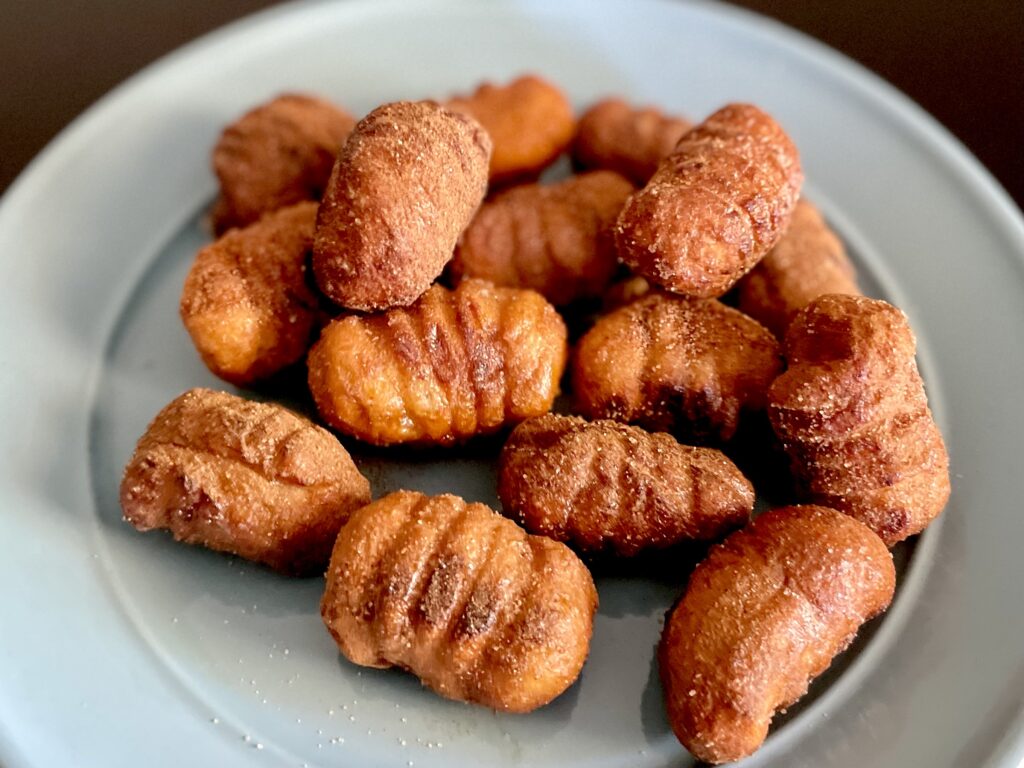Inspired by the Northern Mariana Islands
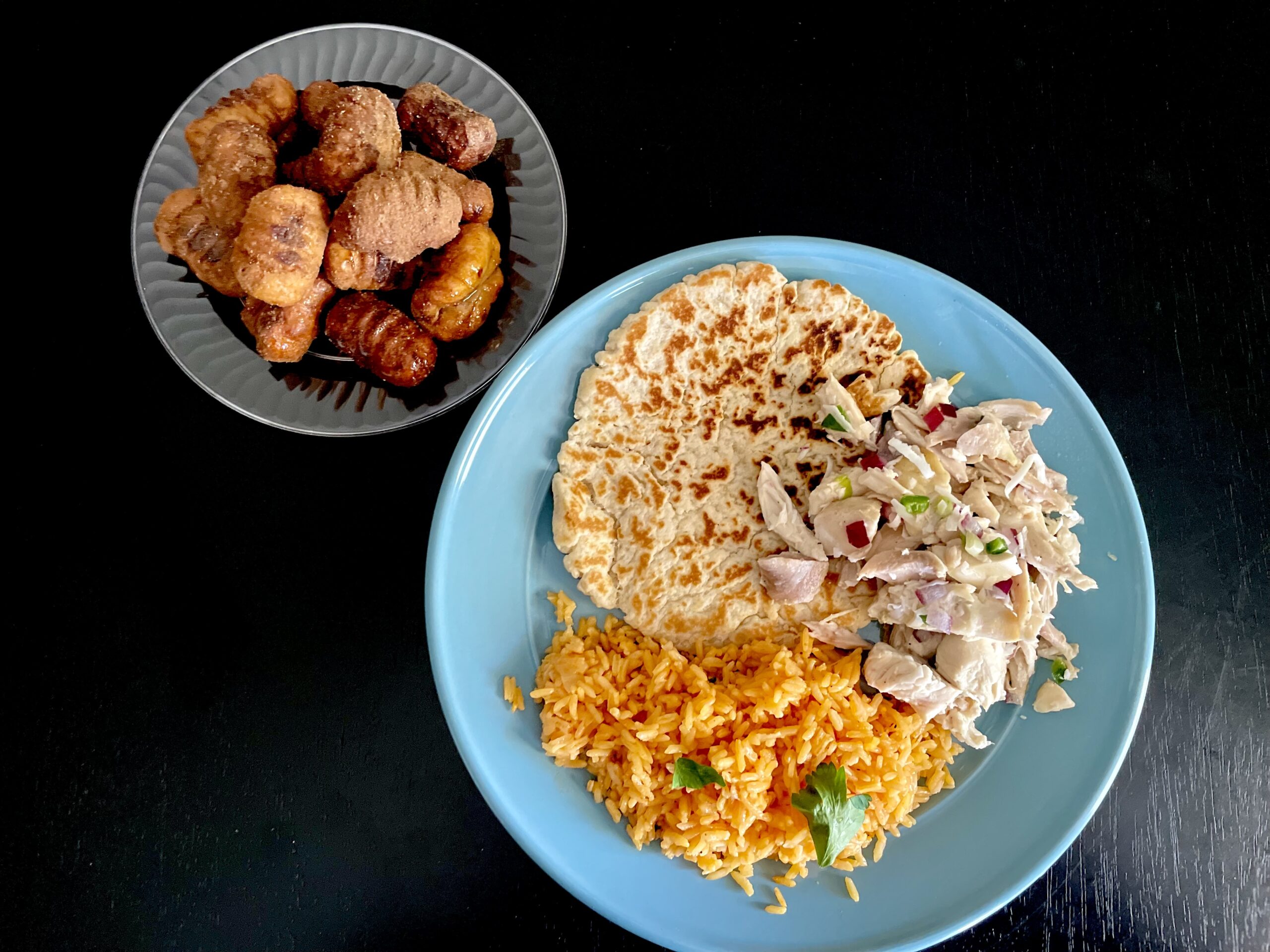
THE MEAL
(Click on the links above to jump to that part of the post!)
We’re taking a detour from the West Coast to jump out to the oceanic U.S. territories, starting with the Northern Mariana Islands!
The Mariana Archipelago consists of 15 islands. The southernmost is Guam, and the other 14 are the Northern Mariana Islands. Both the NMI and Guam were inhabited by the Chamorro people, and both are U.S. territories now, but they were occupied and divided up by separate European nations for long enough that they decided not to merge them again when the U.S. acquired both. Their cultures and cuisines are very interlinked, though, so it was a challenge to figure out which foods to make for which.
Chicken Kelaguen
For the main, I went with NMI’s national dish: kelaguen. Because the NMI were occupied by Spain and were a waypoint between Mexico and the Philippines, their cuisine has an interesting mix of Asian and Spanish influence. The word “kelaguen” was likely borrowed from the Filipino “kilawin,” and the method of “cooking” meat using citrus juice was brought from Peru by the Spanish.
In the NMI, they usually make kelaguen using raw shrimp or fish and letting the citrus “cook” it, like ceviche, but I didn’t trust myself to do that correctly, so I went with the version using cooked chicken. 🙂 It turned out pretty good! It was very easy to put together, and the flavors were awesome. It’s like lemony chicken salad, but without any mayonnaise, slightly sweet from the coconut, and with a kick of heat from the serrano peppers.
Titiyas
Kelaguen can be eaten plain, over rice, or with crackers, but a common way is to eat it with titiyas—another Spanish influence on Chamorro cuisine. The name comes from “tortilla,” and they’re essentially the same in form and function, but sweetened with coconut milk.
I struggle with making tortillas correctly, as you’ve probably noticed, but these ended up being my favorite part of the meal! They were such a light, fluffy flatbread, and I have a huge sweet tooth, so I loved the flavor. It paired really well with the citrusy kelaguen!
Red Rice
Chamorro red rice does have Spanish influence, but the people were growing rice on the islands long before Europeans arrived. They were the only Pacific Islanders to grow rice in ancient times, and it’s used in important ceremonies.
When the Spanish came to Guam, they introduced the achote plant, which was likely brought from Mexico, and its seeds added the distinctive reddish color that this rice dish is known for now. It’s a staple dish, common throughout the archipelago, and I froze a portion to use for my Guam meal next time.
This was the easiest part of the meal, by far. You just put everything together in a pot and cook it the way you would any other rice! But it required me to buy a handful of ingredients I’ve never used before, and they gave it a really nice earthy, spicy flavor! I was a big fan.
Jawbreaker Cookies
Also known as guyuria, these traditional Chamorro cookies are supposed to be rock-hard, hence their nickname, “jawbreaker cookies.” The dough is really simple, almost like a pizza dough but with coconut milk. You pinch of small pieces of dough, roll them into balls, then roll those balls down the back of a fork (or on a designated guyuria-shaping board) and fry them up. Then they’re glazed with a simple syrup and dusted with cinnamon-sugar. Yum!
Like with the titiyas, the flavor was great, but my execution was lacking. First of all, I shaped them way too big, because I had a ton of dough but didn’t want a million cookies, so I tried to make them bigger. But that meant that they cooked very unevenly, burning on the outside but very soft in the middle. If I’d made them smaller, they would’ve been a lot crunchier.
Even so, they were tasty! The flavor was a lot like a churro! Definitely a treat I’d try again.
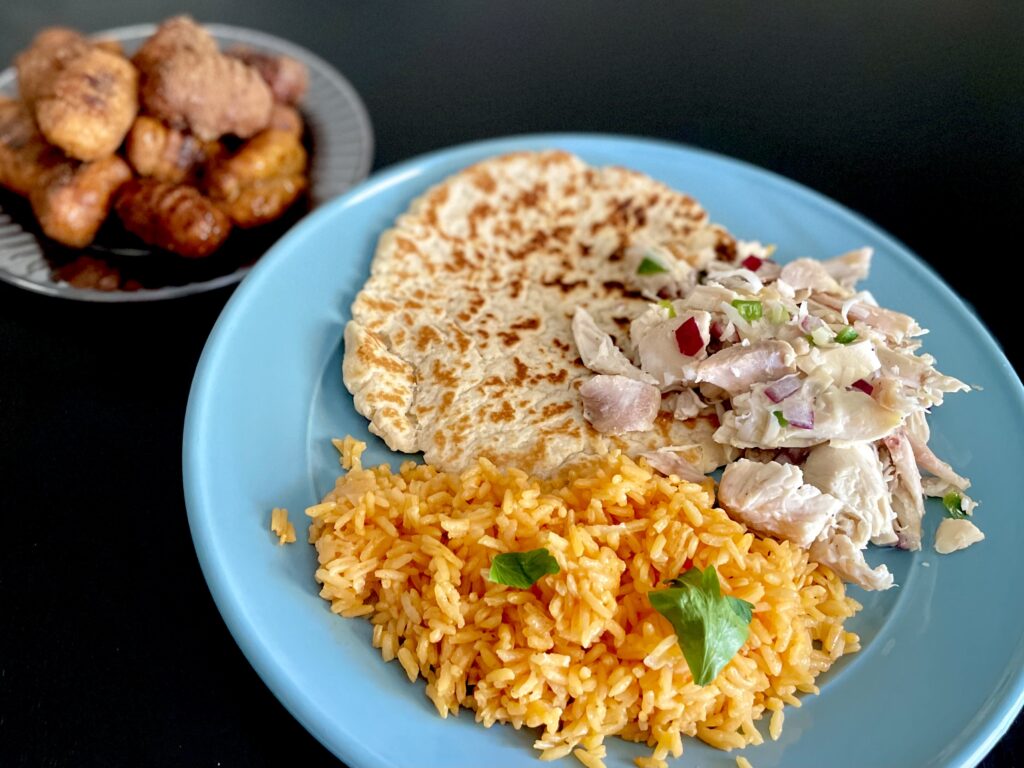
Thank you for reading and following along my state meal challenge journey! Next we’ll go to the NMI’s neighbor: Guam!

